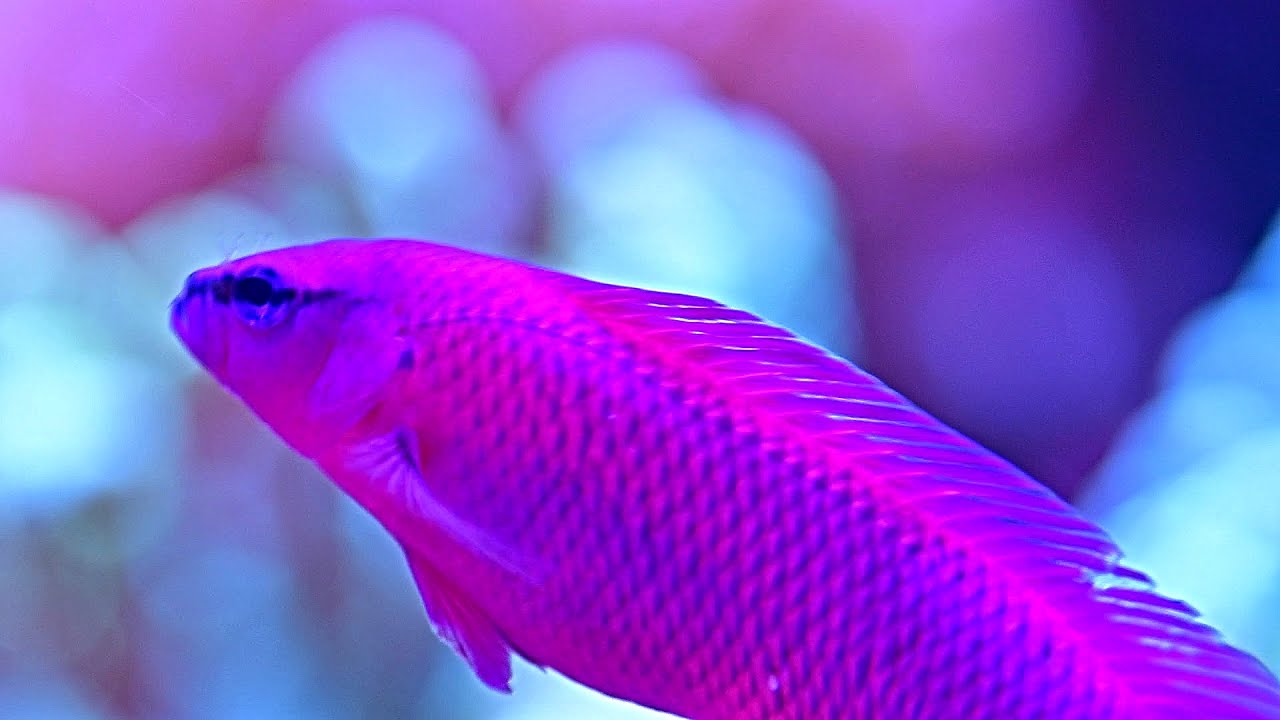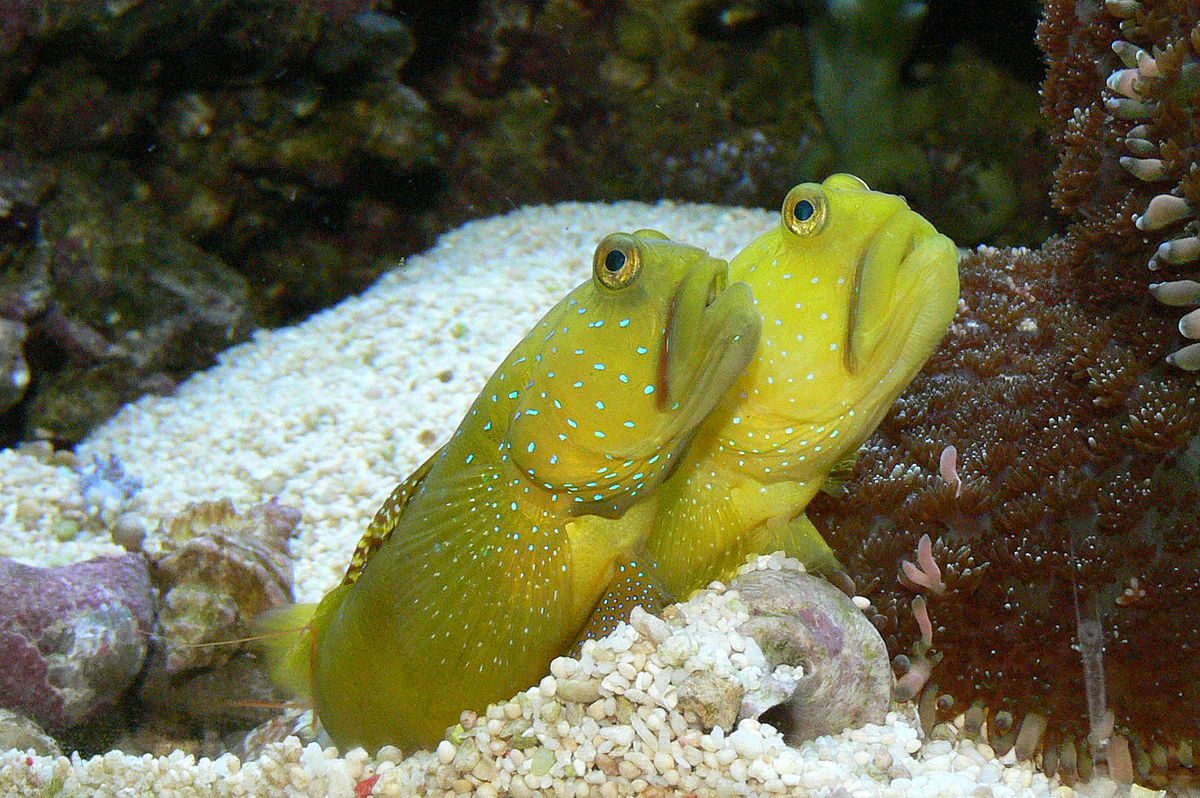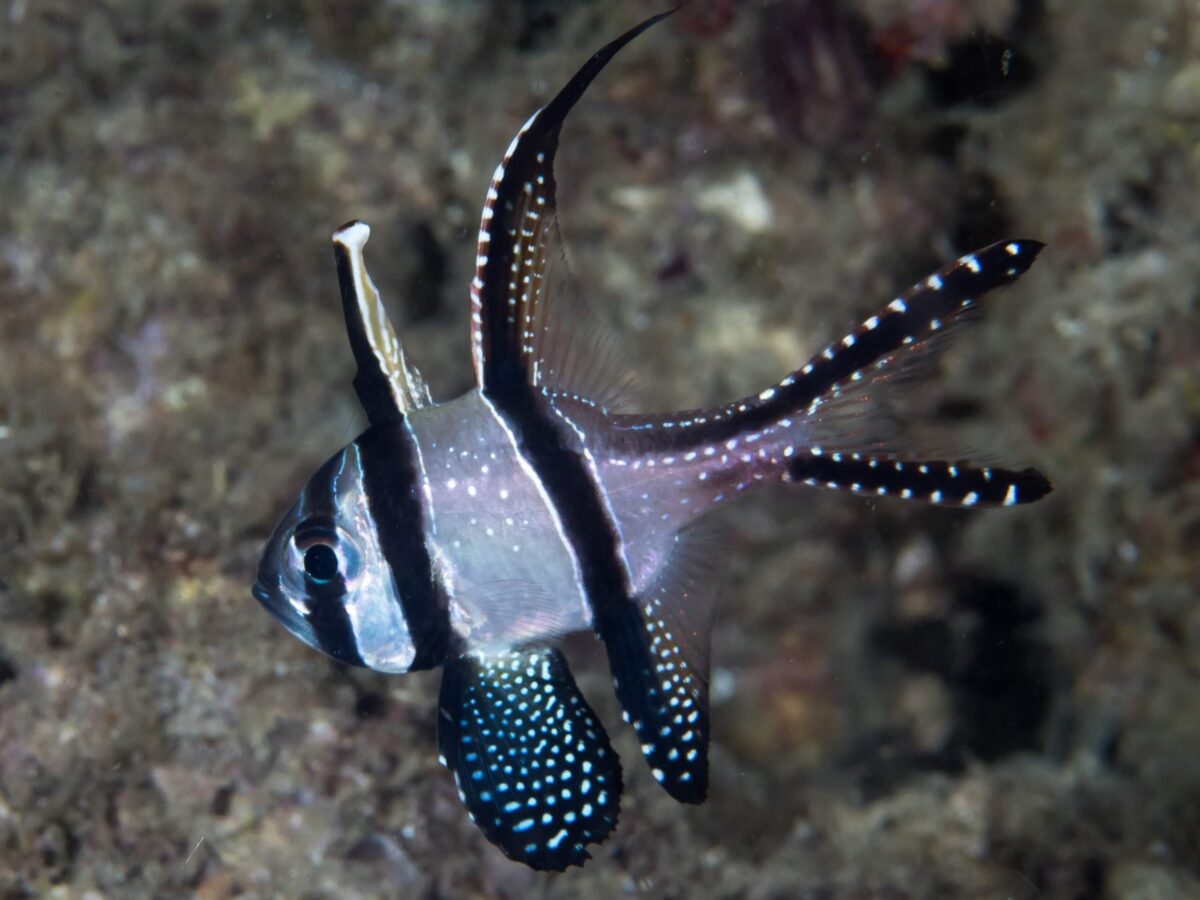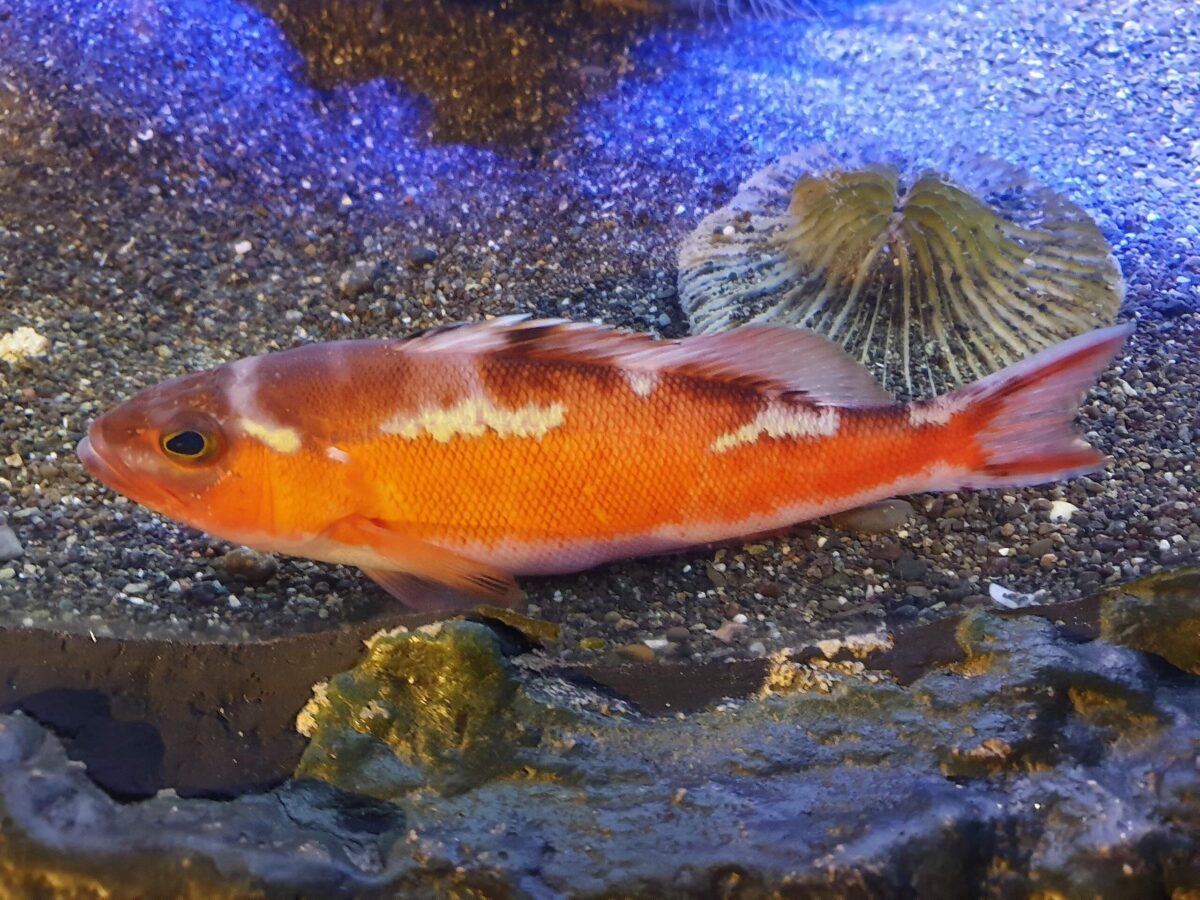Welcome to our comprehensive species guide on the Orchid Dottyback, Pseudochromis fridmani. This stunning saltwater aquarium fish is highly sought after for its vibrant colours and mesmerizing appearance. In this guide, we will provide you with all the essential information you need to know about caring for the Orchid Dottyback in your marine aquarium.
The Orchid Dottyback, with its striking hues and unique patterns, adds a touch of elegance to any saltwater tank. From taxonomy and natural habitat to care requirements and feeding habits, we will cover all aspects of keeping this species in your home aquarium. Whether you are a seasoned hobbyist or a beginner in marine fishkeeping, this guide will be your go-to resource for ensuring the well-being of your Orchid Dottyback.
Discover fascinating details about the Orchid Dottyback’s behaviour, ideal tank conditions, diet and feeding preferences, breeding and reproduction, and more. By the end of this guide, you will have a comprehensive understanding of how to create a thriving environment for this awe-inspiring fish.
Key Takeaways:
- Orchid Dottybacks, known as Pseudochromis fridmani, are visually stunning saltwater aquarium fish.
- They require specific care and attention to thrive in a marine aquarium.
- Understanding their taxonomy, natural habitat, and behaviour is crucial for providing optimal care.
- A suitable tank size, water parameters, and compatible tank mates are essential for their well-being.
- A balanced and nutritious diet is vital to maintain their health.
Introduction
Welcome to the second section of our comprehensive species guide on the Orchid Dottyback (Pseudochromis fridmani). In this section, we will explore the taxonomy and classification of this stunning saltwater aquarium fish and its natural habitat and distribution in the wild.
Taxonomy and Classification
The Orchid Dottyback belongs to the family Pseudochromidae, scientifically known as Pseudochromis fridmani. It was first described by the Israeli marine biologist Victor G. Springer in 1903. As a member of the Pseudochromidae family, this species is closely related to other colourful dottyback fish found in the Indo-Pacific region.
| Attributes | Description |
|---|---|
| Scientific Name: | Likes to hide in the rockwork |
| Common Names: | Orchid Dottyback |
| Origin: | Red Sea |
| Family: | Pseudochromidae |
| Social: | Generally peaceful but can be territorial |
| Domain in Tank: | Likes to hide in rockwork |
| Minimum Tank Size: | 30 gallons (113 liters) |
| Diet: | Carnivore |
| Breeding: | Possible in captivity |
| Care Level: | Moderate |
| pH Range: | 8.1 – 8.4 |
| Water Hardness: | 8 – 12 dKH |
| Temperature: | 72-78°F (22-25.5°C) |
| Common Diseases: | Marine Ich, Marine Velvet |
| Life Span: | 5+ years |
| Size: | Up to 3 inches (7.6 cm) |
| Best Tank Mates: | Clownfish, Cardinalfish, Small Wrasses, and other peaceful community reef fish. Avoid larger, aggressive fish. |
Natural Habitat and Distribution
The Orchid Dottyback is native to the Red Sea, specifically the reefs of the Gulf of Aqaba. It can also be found in the Gulf of Eilat, a northern extension of the Red Sea. These vibrant fish inhabit many reef habitats, including coral slopes, flats, and lagoons.
Regarding distribution, the Orchid Dottyback is limited to the Red Sea region and is not found in other parts of the world. This restricted range adds to its allure and desirability among aquarists, as it is considered an exclusive species in the aquarium trade.
Now that we have established the taxonomy and explored the natural habitat and distribution of the Orchid Dottyback let’s move on to the next section, where we will delve into its physical description and characteristics.
Physical Description and Characteristics
This section will explore the physical description and characteristics of the Orchid Dottyback, a captivating saltwater aquarium fish. Known scientifically as Pseudochromis fridmani, this species is admired for its vibrant colours, intricate markings, and unique features.
Colours and Markings
The Orchid Dottyback exhibits a mesmerizing combination of colours, making it a standout in any aquarium. Its body is primarily electric blue with a contrasting purple or pink hue near the head. Irregular yellow or orange markings cover its face and fins, adding to its allure.
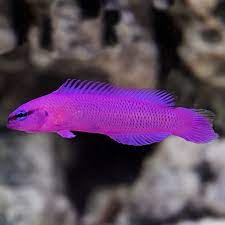
Gender Differences
Identifying the gender of an Orchid Dottyback can be challenging as there are no distinctive physical differences between males and females. However, during breeding season, females may display a swelling in the abdominal area, indicating their readiness to lay eggs.
Varieties
Multiple varieties of Orchid Dottybacks are available in the aquarium trade, each with distinct colouration and patterns. These variants allow enthusiasts to showcase various hues, from deep purples to bright pinks.
Grades
Orchid Dottybacks are often graded based on colour intensity, pattern clarity, and overall appearance. Higher-grade specimens exhibit more vibrant and striking colouration, commanding a higher price in the market.
Behaviour and Temperament
Despite their small size, Orchid Dottybacks are known for their aggressive behaviour. They are territorial and may exhibit dominance towards other fish in the aquarium. Providing them with ample hiding spaces is essential to reduce potential conflicts and create a harmonious environment.
Aquarium Requirements
To provide the optimal environment for the Orchid Dottyback, it is essential to understand and fulfil its specific aquarium requirements. This will ensure the health and well-being of the fish in a captive setting.
Ideal Tank Size and Layout
The Orchid Dottyback requires a tank size of at least 30 gallons (113 litres) to accommodate its active nature. A larger tank will provide ample swimming space and reduce aggression. The layout should include plenty of hiding spots such as live rock, caves, and coral formations to mimic their natural habitat.
Water Parameters
The ideal water parameters for the Orchid Dottyback include a temperature range of 72-78°F (22-25.5°C). The pH level should be maintained between 8.1 – 8.4. Regular water testing and appropriate adjustments are necessary to ensure a stable and suitable aquatic environment.
Suitable Tank Mates and Potential Conflicts
When choosing tank mates for the Orchid Dottyback, it is essential to consider their compatibility. Peaceful species such as clownfish, gobies, and wrasses are generally suitable companions. Avoid keeping them with aggressive or territorial fish, which can lead to conflicts and stress for the Dottyback.
Compatibility with Live Plants and Invertebrates
The Orchid Dottyback may tend to nip at specific types of live plants. Therefore, it is advisable to choose hardy and durable plant species that can withstand their nibbling behaviour. Additionally, caution should be exercised when introducing invertebrates such as shrimp and crabs, as the Dottyback may view them as potential prey.
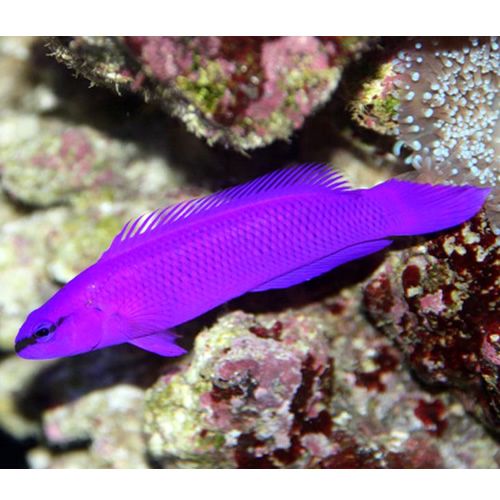
Overall, providing a spacious tank, maintaining suitable water parameters, selecting compatible tank mates, and considering the specific needs of live plants and invertebrates will contribute to the successful care of the Orchid Dottyback in a home aquarium.
Care
Proper care is essential for the health and well-being of the Orchid Dottyback. This section will cover the general care guidelines and potential diseases that may affect this species. We will also provide valuable information on disease prevention and treatment options.
Diseases
The Orchid Dottyback is generally hardy and resistant to common diseases. However, there are a few ailments that owners should be aware of. The most common diseases that can afflict the Orchid Dottyback include:
- Ich (White Spot Disease): This is a parasitic infection characterized by the appearance of white spots on the fish’s body and fins. It is highly contagious and can spread rapidly in a tank.
- Fin Rot: This bacterial infection affects the fins of the fish, causing them to become frayed, discoloured, and inflamed. Fin rot can lead to fin loss and secondary infections if left untreated.
- Brooklynella (Clownfish Disease): This is a parasitic infection that affects the gills and skin of fish, leading to symptoms such as rapid breathing, lethargy, and mucus production.
Prevention is critical when it comes to keeping your Orchid Dottyback healthy. Maintaining optimal water quality, providing a stress-free environment, and quarantining new additions to the tank can significantly reduce the risk of disease outbreaks.
Treatment
If your Orchid Dottyback does fall ill, prompt treatment is crucial to ensure a speedy recovery. The following treatment options can be effective against common diseases:
- Medication: Several medications are available in the market to treat specific diseases. Consult a veterinarian or experienced aquarist to determine the most suitable medication for your fish.
- Quarantine: Isolating the affected fish in a separate quarantine tank can help prevent the spread of disease to other tankmates and provide a stress-free environment for treatment.
- Water Quality Management: Maintaining optimal water parameters, including temperature, salinity, and pH, can support the fish’s immune system and aid recovery.
Remember to closely monitor your Orchid Dottyback during treatment and make any necessary adjustments to the tank environment. If symptoms persist or worsen despite treatment, it is advisable to seek professional assistance.
Diet and Feeding
The diet and feeding habits of the Orchid Dottyback are crucial for its overall health and vitality. In this section, we will explore its dietary preferences, recommended foods, feeding schedule, and provide essential tips on ensuring a balanced and nutritious diet for this species.
Dietary Preferences
The Orchid Dottyback has specific dietary preferences to consider when planning its meals. While carnivores primarily feed on small invertebrates and zooplankton in their natural habitat. It is essential to replicate their natural diet as closely as possible in the aquarium setting.
Recommended Foods and Feeding Schedule
To meet the feeding requirements of the Orchid Dottyback, a variety of live or frozen foods is recommended. Suitable options include brine shrimp, mysis shrimp, chopped fish, and small crustaceans. These foods will provide essential nutrients and promote natural feeding behaviours.
Regarding the feeding schedule, it is advisable to feed the Orchid Dottyback small amounts multiple times throughout the day rather than one large meal. This mimics their feeding patterns in the wild and helps prevent overeating and weight-related health issues.
Tips on Ensuring a Balanced and Nutritious Diet
To ensure a balanced and nutritious diet for your Orchid Dottyback, consider the following tips:
- Offer a mix of protein-rich foods to provide the necessary nutrients.
- Supplement their diet with high-quality commercial pellets or flake food designed for predatory marine fish.
- Occasionally introduce small pieces of fresh or freeze-dried marine algae to diversify their diet and provide additional fibre.
- Monitor their feeding behaviour and adjust the amount of food accordingly to prevent overfeeding or underfeeding.
- Regularly observe their overall health and body condition to ensure they thrive on their diet.
Breeding and Reproduction
Breeding the Orchid Dottyback can be a rewarding and fascinating undertaking. By understanding the sexual dimorphism and breeding behaviour of these fish and providing the appropriate breeding conditions, you can increase the likelihood of successful breeding in captivity.
Sexing
Sexing the Orchid Dottyback can be challenging, as they do not exhibit clear external differences between males and females. However, during the breeding season, males may display more vibrant colors and exhibit territorial behavior.
Breeding Behavior and Conditions
During courtship, the male Orchid Dottyback will entice the female by performing a variety of displays, such as darting, shaking, and flaring its fins. Once a pair has formed, the male will construct a nest using plant materials or available substrate within the aquarium. The female will then deposit her eggs, which the male fertilizes and guards fiercely.
To encourage breeding, it is essential to maintain suitable water conditions, including proper temperature, pH, and salinity levels. Additionally, providing hiding places and plenty of live rock can help simulate the natural breeding environment.
Care of Eggs and Fry
After the female Orchid Dottyback lays her eggs, the male diligently guards the nest and ensures their well-being. It is essential to provide ample cover and a stable environment to prevent any disturbances that could harm the eggs or fry. Avoid placing any aggressive tank mates in proximity to the breeding pair.
Challenges in Breeding in Captivity
Breeding the Orchid Dottyback in captivity can present several challenges. The males may become aggressive towards the females, leading to potential injuries or fatalities. Additionally, maintaining the optimal water conditions for successful breeding can be demanding and require close monitoring and adjustments.
Summary
In conclusion, the Orchid Dottyback (Pseudochromis fridmani) is a stunning and vibrant species highly sought after in the saltwater aquarium hobby.
Key points about the Orchid Dottyback include its eye-catching colours and intricate markings, its compatibility with various tank mates and live plants, and its generally peaceful temperament.
When caring for this species, it is essential to provide an appropriate tank size and layout, maintain suitable water parameters, and offer a balanced diet consisting of live and prepared foods.
While the Orchid Dottyback can be challenging to breed in captivity, successful breeding can be achieved with the right conditions and care, offering enthusiasts a rewarding experience.
Overall, the Orchid Dottyback is a beautiful addition to a saltwater aquarium and with proper care and attention, it can thrive in a home aquarium setting.

